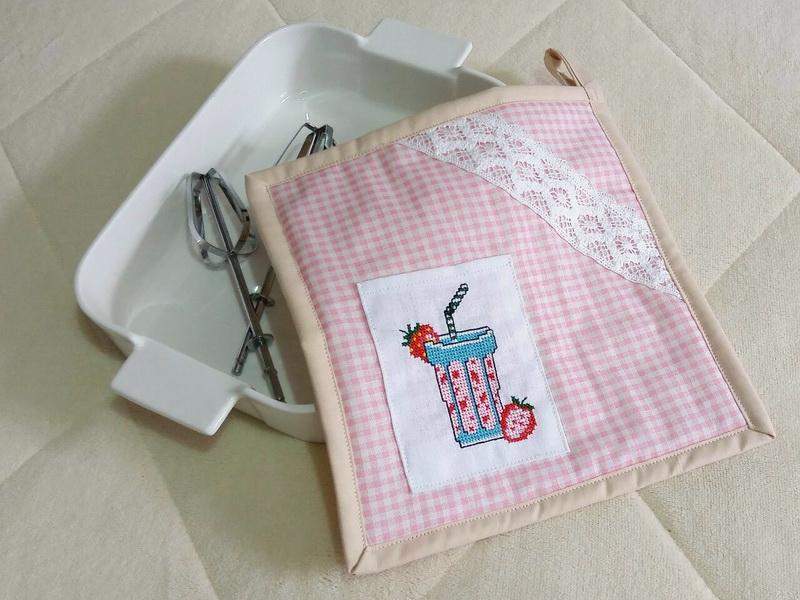Search the Community
Showing results for tags 'batting'.
-
Decorating a kitchen: an embroidered pot holder Not only will an embroidered pot holder protect your hands from scalding but also make your kitchen look lovely. In the course of our collaborative projects, the participants are required to embroider any of the kitchen or table textiles of their choice. No need to do something complex, as one can always make a pot holder. An embroidered pot holder. Materials Sole-colored cotton, 2 pieces Printed cotton, 1 piece Tearaway adhesive stabilizer Upper thread Underthread Scissors Cotton lace Padding material An embroidered pot holder. The making process I used two sole-colored pieces of different fabrics for the embroidered part and for the back part of my pot holder, with a binding. I could have cut the front and the back parts out of the same fabric, as it would look more natural if the whole thing was white. But I didn't have the necessary amount of white fabric, and therefore, I supplemented it with beige one. Let’s embroider a design first. Stabilize your fabric and hoop it. Select your threads (I do it beforehand, and sort them in the order of sewing), and start the embroidery. While the machine is going, you can make yourself a cup of coffee, pausing occasionally to change the thread. Once the embroidery is ready, unhoop the fabric and do the cutting. Natural fabrics, being heat-resistant, are preferable. My pot holder was a simple square one, with no bells and whistles. As for the batting, felt, wadding or drape cloth are most common, but if you don't have any of those, and you only plan to use the pot holder for the decoration, you may use polyester batting instead. Attention! Polyester batting is highly thermal conductive and has a low melting threshold. You’ll need to cut two square pieces, one sole-colored and one printed. Don’t use vividly colored prints; the fabric should not distract attention from the embroidery. It would be better if one of the colors of the fabric will match one of the main colors in your design. Out of the embroidered piece, cut out a pocket with seam allowance, so that the design is right at the center. Lay a piece of lace on top of it, facing into the right corner. Cut with allowance, in case it shifts during sewing, and you don’t want to rip it off. Prepare the binding. It is usually cut on a bias, but if you don’t have enough material, you may use a simple rectangle instead. First, I stitched the batting and the beige fabric for the back part of my pot holder. These are simple square pieces, no difficulties here. You may mark them for better alignment, but I did it by eye, and it came out fine. Then I stitched the pocket and the lace to the front part. I ironed out the edging so that it would sew easier, pinned the corners and carefully stitched along the edge. Now be very careful and make sure that the stitch goes along the top edge of the binding in one go and doesn’t slide down the lower one. If you set your machine at a low speed and keep steadying it along the way, it will come out fine. Be extra careful at the corners (alas, I didn’t manage to achieve perfection here). I don’t like basting and step-by-step stuff, all this dilly-dallying just doesn’t agree with me. But if you prefer to work that way, you can baste the thing first. Cut your binding a little longer than the perimeter of the pot holder; we’ll make the surplus into an eyelet. Your pot holder is ready! You may insert your favorite recipe into the pocket. Original text by Mary Stratan
- 10 comments
-
- 4
-

-

-
- quilt
- embroidery
-
(and 4 more)
Tagged with:


